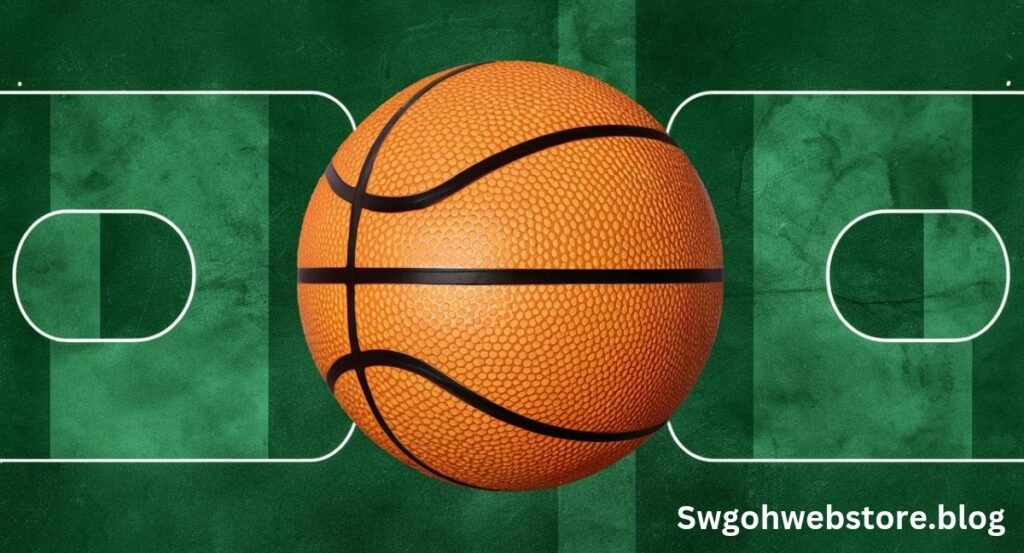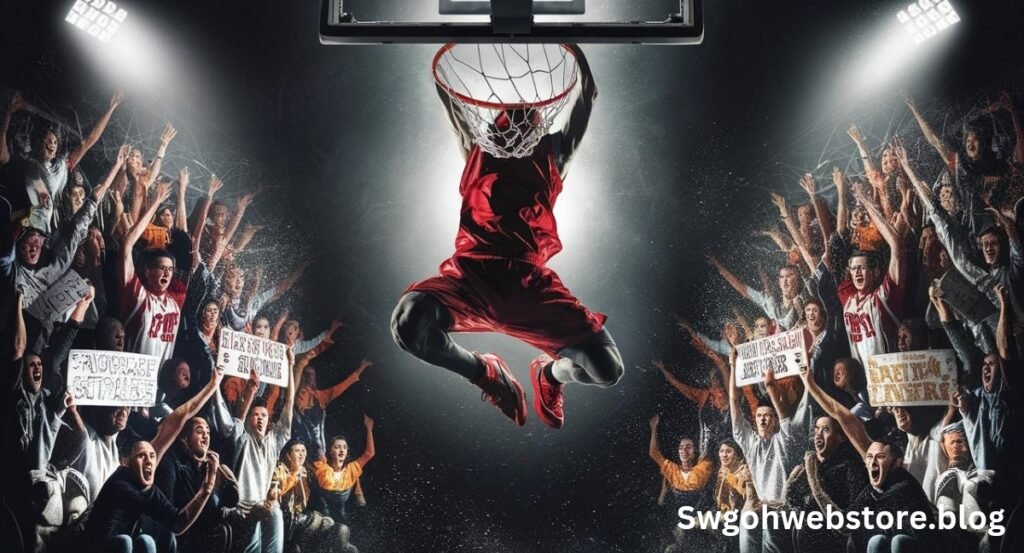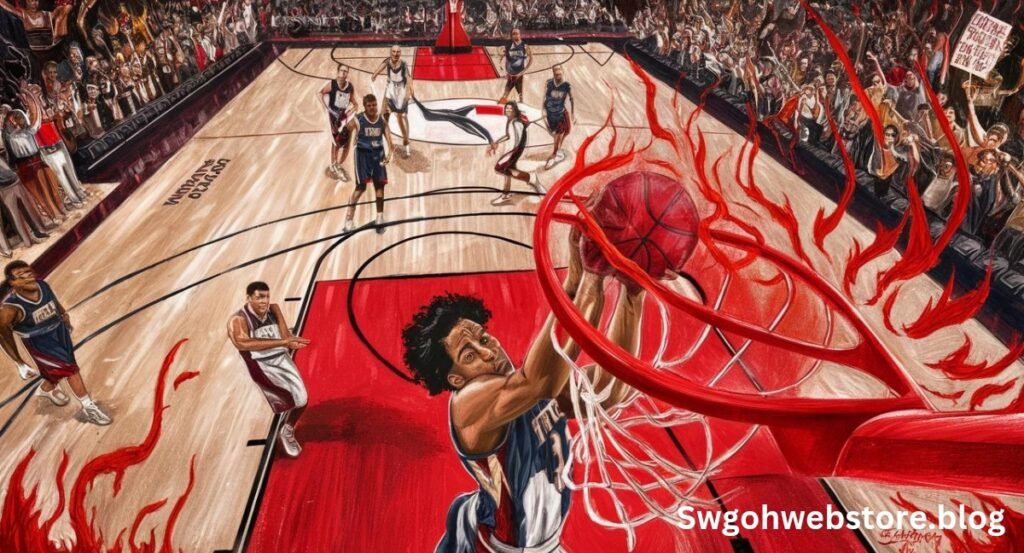Drawing:cul23ybyzfm= basketball combines art and sports in a unique way. Artists use their skills to capture the energy and excitement of basketball games. This keyword represents how drawings can express movement and emotion on the court. Through sketches and illustrations, fans can celebrate their love for the game. It shows that basketball is not just a sport but also a source of inspiration for creativity.
In this section, we will explore how drawing connects to basketball culture. Artists often draw famous players, iconic moments, and intense games. These drawings help fans feel closer to the action, even if they can’t be at the game. By looking at these artworks, we can see the passion and dedication behind basketball. Drawing:cul23ybyzfm= basketball serves as a bridge between sports and art, highlighting their shared spirit.
History of Drawing:cul23ybyzfm= basketball
The history of Drawing:cul23ybyzfm= basketball goes back many years. As basketball grew in popularity, artists began to capture its essence on paper. Early illustrations often featured players in action, showing their skills and teamwork. Over time, basketball became a frequent subject for many different styles of art. These drawings reflect not only the sport but also the culture surrounding it.
In the mid-20th century, basketball became even more popular in visual art. Artists started to explore different ways to express the game’s energy. Many famous paintings and sketches showcase legendary players and memorable moments. This trend continued into modern times, with artists using new techniques and media to depict basketball. Overall, the history of basketball in art shows how deeply intertwined these two worlds are.
Techniques for Drawing:cul23ybyzfm= Basketball
When creating a drawing:cul23ybyzfm= basketball, various techniques can help bring the sport to life. Artists often start with basic shapes to outline the players and the basketball court. Using dynamic lines can convey movement, making the drawing feel energetic and alive. Shading and highlighting techniques can add depth, making the figures look more three-dimensional. Understanding these basic techniques is essential for capturing the essence of basketball in a drawing.
Also Read: THE ULTIMATE GUIDE TO BLOGGING WITH BBLOG.UK
In addition to basic techniques, artists can use color and texture to enhance their drawing:cul23ybyzfm= basketball. Bright colors can represent team uniforms, while shadows can create a sense of realism. Some artists choose to focus on specific moments, like a slam dunk or a game-winning shot, which can be highlighted with special effects. Experimenting with different styles, such as realism or abstract, can also help express the artist’s unique perspective on basketball. By mastering these techniques, artists can create compelling drawings that celebrate the sport.
Famous Artists and Their Drawing:cul23ybyzfm= basketball

Many famous artists have drawn inspiration from basketball, creating iconic pieces that celebrate the sport. For instance, illustrator Charles McGee has created works that highlight the cultural impact of basketball in African American communities. His drawings often capture the spirit of the game and its connection to urban life. Similarly, artist Robert Rauschenberg incorporated basketball imagery into his mixed-media works, blending art and sports in innovative ways. These artists show how drawing:cul23ybyzfm= basketball can reflect broader cultural themes.
Another notable artist is John “J” Kearney, who is known for his dynamic and vibrant basketball illustrations. His drawings often feature famous players in action, showcasing their athleticism and style. Additionally, street artists have also embraced basketball in their work, creating murals that celebrate local teams and players. Through their diverse styles, these artists highlight the beauty and excitement of the game. Drawing:cul23ybyzfm= basketball continues to inspire artists to express their passion for sports through visual art.
Drawing:cul23ybyzfm= Basketball: Capturing Movement
Capturing movement is essential when creating a drawing:cul23ybyzfm= basketball. The fast-paced nature of the game requires artists to convey action and energy in their work. To achieve this, artists often focus on the poses and positions of the players, using dynamic lines to suggest motion. Observing real games can help artists understand how players move and interact on the court. This understanding allows them to create more realistic and engaging representations of basketball.
In addition to pose and line work, artists can use techniques like blur effects to illustrate speed. By slightly blurring parts of the drawing, they can give the impression of rapid movement, making the artwork feel alive. Capturing the intensity of a jump shot or a fast break adds excitement to the piece. Artists can also play with perspective, placing the viewer in the action to enhance the experience. Ultimately, drawing:cul23ybyzfm= basketball is about bringing the thrill of the game to life through effective representation of movement.
The Role of Color in Drawing:cul23ybyzfm= Basketball
Color plays a crucial role in drawing:cul23ybyzfm= basketball, as it can evoke emotions and set the tone for the artwork. Bright, vibrant colors can capture the excitement and energy of a basketball game, drawing the viewer’s attention. Artists often use team colors to create a sense of identity and pride, reflecting the culture surrounding the sport. By selecting the right color palette, artists can enhance the overall impact of their drawings and engage viewers more effectively.
In addition to representing teams, color can also convey mood and movement in basketball drawings. Warm colors like red and orange can suggest intensity and action, while cooler colors like blue can create a sense of calm or reflection. Artists can use contrasting colors to highlight specific players or moments in the game, making them stand out. Through thoughtful use of color, drawing:cul23ybyzfm= basketball can transform a simple illustration into a vibrant celebration of the sport, capturing its spirit and passion.
Drawing:cul23ybyzfm= Basketball in Pop Culture

Drawing:cul23ybyzfm= basketball has a significant presence in pop culture, influencing how the sport is perceived and celebrated. From comic books to animated series, basketball-themed illustrations often depict famous players and their signature moves. These artworks resonate with fans, helping to build a connection between the sport and its audience. Artists draw inspiration from basketball’s impact on music, fashion, and film, showcasing how the game extends beyond the court.
Also Read: Bluefire Wilderness Lawsuit: Unraveling the Details
Additionally, basketball’s role in pop culture is evident in street art and graffiti, where artists use vibrant murals to celebrate local teams and players. These public displays of art not only beautify neighborhoods but also foster community pride and support for the sport. Events like the NBA All-Star Weekend often feature various artists creating live drawings that highlight the excitement of the game. By integrating drawing:cul23ybyzfm= basketball into pop culture, artists help keep the sport alive in the hearts and minds of fans around the world.
Creating Your Own Drawing:cul23ybyzfm= Basketball
Creating your own drawing:cul23ybyzfm= basketball can be an exciting and rewarding experience. Start by gathering reference images of players, action shots, or even photos of your favorite games. Observing these images will help you understand the poses, movements, and details that make basketball unique. Once you have your references, sketch a rough outline of your drawing, focusing on the players’ positions and the layout of the court.
After your initial sketch, refine the details by adding features like facial expressions, uniforms, and basketballs. Don’t forget to incorporate movement by using dynamic lines to show action. Once you’re satisfied with the drawing, choose your colors to bring it to life. You can use colored pencils, markers, or even digital tools to enhance your artwork. Finally, remember to have fun and express your love for the game through your unique perspective in drawing:cul23ybyzfm= basketball.
Exhibitions and Shows Featuring Drawing:cul23ybyzfm= Basketball

Exhibitions and shows featuring drawing:cul23ybyzfm= basketball provide a platform for artists to showcase their work and celebrate the sport. These events often include a mix of traditional and contemporary art, highlighting various styles and techniques. Galleries and museums may host special exhibitions that focus on basketball culture, featuring pieces from both established and emerging artists. Such events not only promote the artists but also engage the community in appreciating basketball through art.
Also Read: Geekzilla Radio: The Ultimate Hub for Geek Culture
In addition to gallery shows, street art festivals often feature basketball-themed murals and installations. These events bring artists together to create large-scale works that capture the essence of the game. Local community centers may also organize basketball art competitions, encouraging participants to create their own drawings inspired by the sport. By attending these exhibitions and shows, fans and art enthusiasts can experience the connection between drawing:cul23ybyzfm= basketball and the vibrant culture surrounding the game.
Showcasing and Sharing Your Work
After putting in the effort to create a “drawing:cul23ybyzfm= basketball,” it’s time to share your work with others. Showcasing your drawings can help you receive feedback and recognition, and it’s easier than ever with social media platforms.
Start by taking high-quality photos or scanning your “drawing:cul23ybyzfm= basketball.” Good lighting and a steady hand are crucial to capturing all the details. If you’re sharing digital drawings, ensure the resolution is high enough to show your work clearly.
Social media platforms like Instagram, Facebook, and Twitter are great places to share your “drawing:cul23ybyzfm= basketball.” Use relevant hashtags like #basketballdrawing, #sportsart, and #drawing:cul23ybyzfm= basketball to reach a wider audience and connect with other artists and enthusiasts.
Art forums and communities, such as DeviantArt or Reddit’s r/Art, are also excellent places to showcase your work. These platforms allow you to receive constructive feedback and engage with a community of like-minded artists who share your passion for “drawing:cul23ybyzfm= basketball.”
Consider creating a portfolio website or blog to display your “drawing:cul23ybyzfm= basketball” and other artworks. This can serve as a professional showcase of your skills and a way to attract potential clients or collaborators.
By sharing your “drawing:cul23ybyzfm= basketball” online, you can gain valuable feedback, connect with other artists, and build an audience for your work. Embrace the opportunities provided by digital platforms to grow and improve as an artist.
Conclusion: The Impact of Drawing:cul23ybyzfm= Basketball
Drawing:cul23ybyzfm= basketball serves as a powerful medium that bridges the worlds of art and sports. Through various techniques and styles, artists capture the energy, emotion, and culture associated with basketball. These drawings not only celebrate the sport itself but also reflect its influence on society, from pop culture to community pride. As artists continue to explore and innovate, the representation of basketball in art remains vibrant and dynamic.
The impact of drawing:cul23ybyzfm= basketball goes beyond the artwork itself; it fosters a deeper appreciation for the game and its history. By showcasing iconic players, memorable moments, and the spirit of competition, these drawings inspire both fans and aspiring artists. As basketball continues to evolve, so will its artistic expressions, ensuring that the connection between art and sports remains strong for future generations.
FAQs
What is drawing:cul23ybyzfm= basketball?
Drawing:cul23ybyzfm= basketball refers to the artistic representation of basketball through various drawing techniques. It encompasses illustrations that capture the essence of the sport, including its players, movements, and culture. This keyword highlights the creativity and passion behind the art form, showcasing how basketball inspires artists to express themselves through their work. Artists may use different styles and mediums to convey the excitement and energy associated with basketball, making it a unique and engaging subject.
Why is color important in drawing:cul23ybyzfm= basketball?
Color plays a vital role in drawing:cul23ybyzfm= basketball as it enhances the emotional impact of the artwork. Bright and vibrant colors can evoke feelings of excitement and energy, reflecting the dynamic nature of the sport. By using team colors and contrasting shades, artists can create a strong visual identity for the players and their respective teams. Additionally, color can help convey movement and mood, making the artwork more engaging for viewers. Ultimately, the thoughtful use of color in drawing basketball enriches the viewer’s experience and appreciation of the art.
How can I start creating my own drawing:cul23ybyzfm= basketball?
To start creating your own drawing:cul23ybyzfm= basketball, begin by gathering reference images of players, games, or basketball courts. Observing these references will help you understand the key elements of the sport, such as poses and movements. Sketch a rough outline of your drawing, focusing on capturing the action and energy. Once you have your basic sketch, refine the details and add color to bring your artwork to life. Remember to experiment with different techniques and styles, and most importantly, have fun expressing your love for basketball through your drawing!
What techniques can I use in drawing:cul23ybyzfm= basketball?
There are several techniques you can use in drawing:cul23ybyzfm= basketball to effectively capture the sport’s essence. Start with basic shapes and dynamic lines to outline the players and their movements. Shading and highlighting can add depth and realism to your drawings. Additionally, consider using blur effects to convey speed and action, making your artwork feel alive. Experimenting with perspective can also enhance the viewer’s experience, placing them in the midst of the game. By incorporating these techniques, you can create compelling drawings that celebrate the excitement of basketball.
Where can I find exhibitions featuring drawing:cul23ybyzfm= basketball?
Exhibitions featuring drawing:cul23ybyzfm= basketball can be found in various venues, including galleries, museums, and community centers. Many art galleries host special exhibitions focused on sports and basketball culture, showcasing the work of both established and emerging artists. Additionally, street art festivals often feature basketball-themed murals and installations that highlight the sport’s influence on the community. To stay updated on upcoming exhibitions, consider following local art organizations and visiting websites dedicated to the art scene in your area. These events provide a great opportunity to appreciate the connection between drawing and basketball.

Emily, an 8-year veteran, blends tech savvy with wanderlust. His fashion-forward perspective and business acumen create captivating content. Explore realms where innovation meets style.